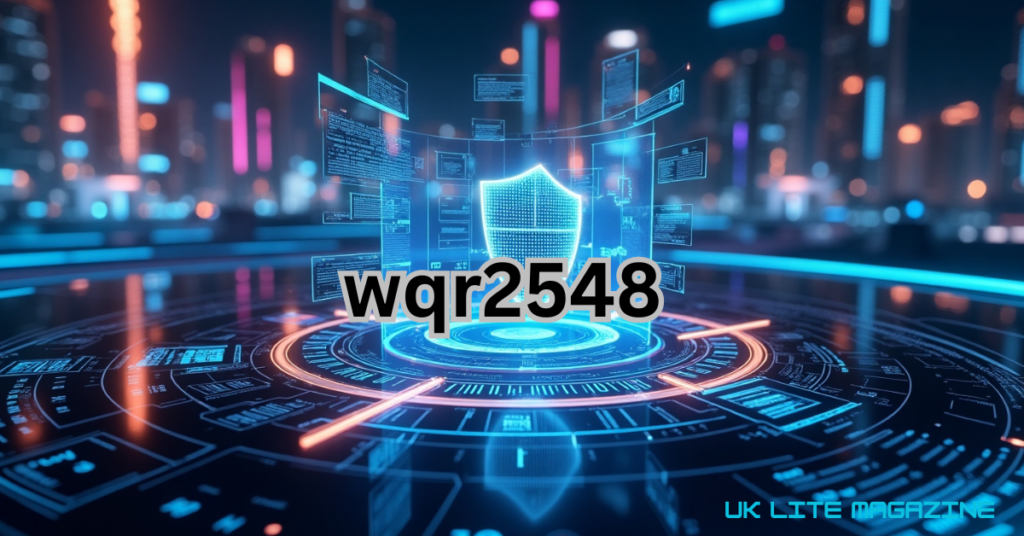The world is evolving rapidly, and new technologies, products, and concepts continue to shape our future. Among these, wqr2548 has gained significant attention for its potential impact across different industries. While many are still discovering what wqr2548 is, experts are already discussing its future trends and applications. In this article, we will explore the latest developments, potential uses, challenges, and predictions for wqr2548 in the coming years.
Understanding wqr2548
Before diving into the future, it’s important to understand what wqr2548 represents. It could be a new technology, a product, or an industry-specific term that is gaining traction. Regardless of its nature, wqr2548 is expected to bring about significant changes in its respective field.
If wqr2548 is a technological advancement, it might relate to artificial intelligence, blockchain, cybersecurity, or data analytics. If it is a product, it could be associated with health, finance, or digital transformation. Whatever its specific application, the growing interest in wqr2548 signals a shift in how industries operate and innovate.
Trends Shaping the Future of wqr2548
Several key trends indicate how wqr2548 will evolve in the coming years. Let’s explore some of the most prominent ones:
1. Increased Integration with AI and Automation
Automation and artificial intelligence (AI) are revolutionizing various industries, and wqr2548 is no exception. AI-driven systems can enhance the efficiency, accuracy, and scalability of wqr2548, making it more accessible and useful for businesses and individuals.
2. Adoption Across Multiple Sectors
As industries recognize the benefits of wqr2548, its adoption is expected to grow across different domains. Sectors like healthcare, finance, logistics, and manufacturing may leverage wqr2548 to optimize operations, improve decision-making, and enhance user experiences.
3. Enhanced Security Measures
With growing concerns about data privacy and cybersecurity, wqr2548 will likely incorporate stronger security protocols. Blockchain technology, encryption techniques, and decentralized networks might play a crucial role in securing wqr2548 applications from cyber threats.
4. Scalability and Cloud Integration
Cloud computing is reshaping how businesses manage data and applications. wqr2548 could benefit from seamless cloud integration, allowing users to access its features from anywhere in the world while ensuring high performance and reliability.
5. Regulatory Developments
As wqr2548 grows in popularity, governments and regulatory bodies will likely establish guidelines and policies to ensure its responsible use. Compliance with industry standards and ethical considerations will be vital for companies and developers working with wqr2548.
Predictions for the Future of wqr2548
Looking ahead, several predictions can be made regarding the future of wqr2548:
1. Mainstream Adoption
In the next five to ten years, wqr2548 is expected to become a mainstream technology or product, widely used by individuals and businesses alike. As awareness and accessibility increase, it will no longer be limited to a niche audience.
2. Improved Efficiency and User Experience
Continuous advancements in machine learning and user interface design will make wqr2548 more efficient and user-friendly. Enhanced features, automation, and real-time analytics will contribute to a seamless experience.
3. Global Expansion
If wqr2548 has applications beyond a specific region, it is likely to expand internationally. Companies investing in wqr2548 will explore new markets and tailor their offerings to meet the diverse needs of global consumers.
4. Sustainability and Green Innovations
With a growing focus on sustainability, future developments of wqr2548 may incorporate eco-friendly solutions. Whether through energy-efficient technologies or sustainable business practices, wqr2548 could contribute to a greener future.
5. Emergence of New Business Models
As wqr2548 evolves, businesses will find innovative ways to monetize its capabilities. Subscription models, pay-per-use services, and decentralized networks may shape the economic landscape surrounding wqr2548.
Challenges to Overcome
Despite its promising future, wqr2548 may face certain challenges, including:
- High Initial Costs – Adoption may require significant investment in infrastructure and training.
- Security Risks – Cyber threats and data breaches could hinder its success.
- Regulatory Barriers – Compliance with evolving laws may pose difficulties for businesses.
- Market Competition – New alternatives and competitors may emerge, affecting its adoption rate.
Conclusion
The future of wqr2548 looks promising, with numerous trends and innovations shaping its evolution. From AI integration and cloud computing to enhanced security and sustainability, wqr2548 is poised to transform industries and redefine user experiences. However, challenges such as security risks, regulatory concerns, and competition must be addressed to ensure long-term success.
As technology continues to advance, staying updated with the latest developments in wqr2548 will be crucial for businesses and individuals looking to leverage its full potential.
Frequently Asked Questions (FAQs)
1. What is wqr2548 used for?
The applications of wqr2548 vary across industries, ranging from technology and finance to healthcare and logistics. It is designed to improve efficiency, security, and overall performance.
2. Will wqr2548 replace existing technologies?
While wqr2548 has the potential to enhance or replace certain technologies, it is more likely to work alongside existing solutions to provide better results.
3. Is wqr2548 secure to use?
Security measures such as encryption, blockchain, and AI-driven protection are being integrated into wqr2548 to ensure its safe usage.
4. How can businesses benefit from wqr2548?
Businesses can leverage wqr2548 to streamline operations, improve data management, enhance security, and increase customer satisfaction.
5. What are the challenges associated with wqr2548?
Some challenges include high initial costs, cybersecurity risks, regulatory compliance, and market competition.

